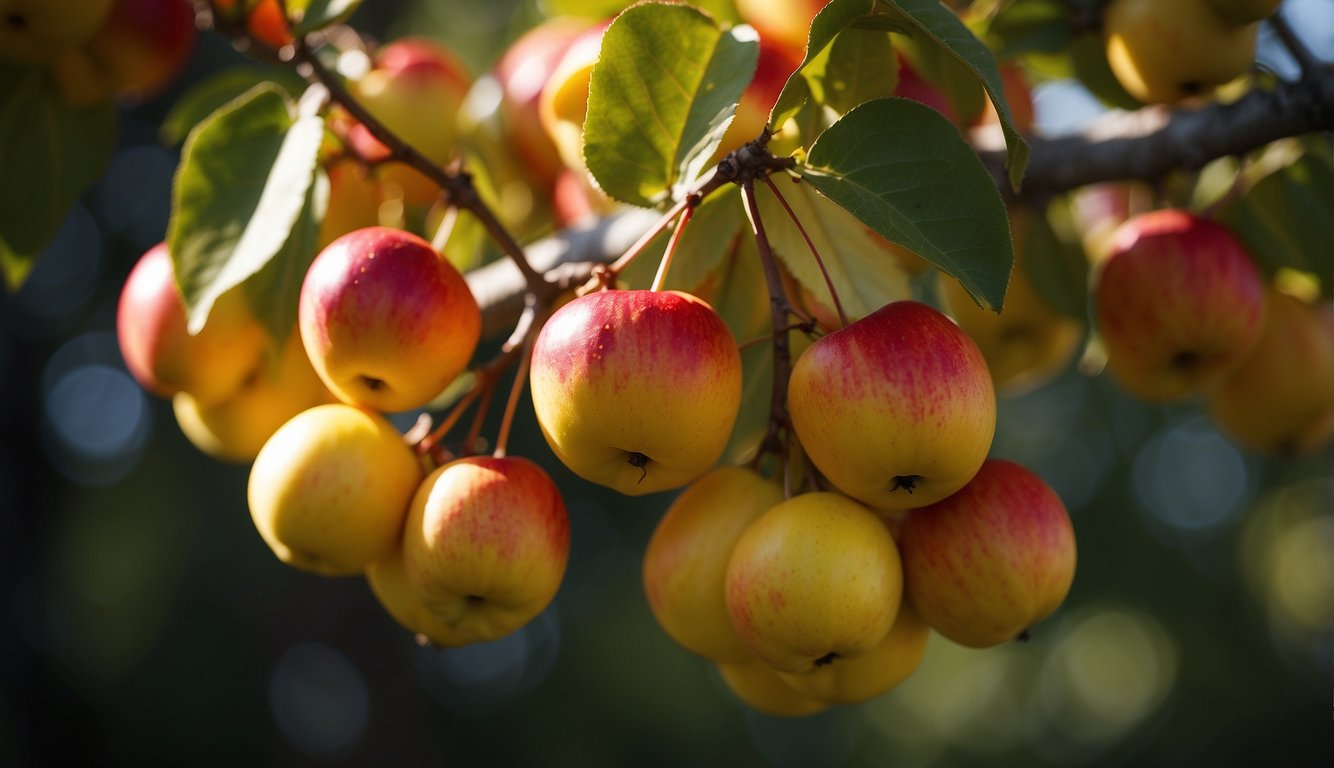TheHerbProf.com is a treasure trove of knowledge for those interested in natural healing and herbal remedies. The website is run by Paul Johnston MD. A naturopathic who has not only received extensive education in the field but also has personal experience in self-healing.
Are crab apples edible? Crab apples are a common sight in many parts of the world, and their small size and bright colors make them a popular choice for decoration. However, many people wonder whether crab apples are safe to eat or not.
While there is a common misconception that crab apples are toxic, this is not the case. As long as you avoid eating the core and seeds, just like with bigger apples, crab apples are perfectly safe to eat. In fact, they are a good source of vitamin C and have small amounts of other nutrients.
According to WebMD, one cup of raw crab apples has 83.6 calories and contains low levels of iron.
That being said, crab apples are generally not something you want to munch right off the tree. They are pretty tart and need some cooking and sweetening to be enjoyed.
In this article, I will delve deeper into the topic of whether crab apples are edible, what makes them safe to eat, and how you can prepare them to make them delicious.
What Are Crab Apples?
Defining Crab Apples
Crab apples are a type of fruit that belongs to the genus Malus. They are closely related to regular apples, but they are smaller in size and have a more tart flavor.
Crab apples are generally defined as apples that have a diameter of two inches or less.
Species and Varieties
There are many different species and varieties of crab apples, each with its own unique characteristics.
Some of the most common species of crab apples include Malus sylvestris, Malus floribunda, and Malus coronaria. These species are known for their small size and bright colors, which range from red to yellow and green.
Physical Characteristics
Crab apple trees are small, deciduous trees that are typically between 12 and 25 feet tall. They are known for their attractive flowers, which bloom in the spring and are followed by small, round fruit in the fall.
The fruit of the crab apple tree is typically between 1 and 2 inches in diameter and is usually red, yellow, or green in color.
Nutritional Profile

Crab apples are a good source of nutrients and antioxidants. They contain a variety of vitamins and minerals, including vitamin C, potassium, and phosphorus. Additionally, they are rich in fiber and pectin, which can help promote digestive health.
Vitamin and Mineral Content
Crab apples are a good source of vitamin C, which is important for immune function and skin health. They also contain potassium, which is essential for maintaining healthy blood pressure levels and proper muscle function.
Phosphorus is another important mineral found in crab apples, which is necessary for strong bones and teeth.
Antioxidants and Polyphenols
Crab apples are rich in antioxidants and polyphenols, which can help protect against cellular damage and reduce the risk of chronic diseases.
These compounds can help neutralize harmful free radicals in the body and reduce inflammation.
Fiber and Pectin
Crab apples are a good source of fiber and pectin, which can help promote digestive health.
Fiber is important for maintaining healthy bowel movements and reducing the risk of constipation. Pectin is a type of soluble fiber that can help lower cholesterol levels and improve blood sugar control.
Culinary Uses
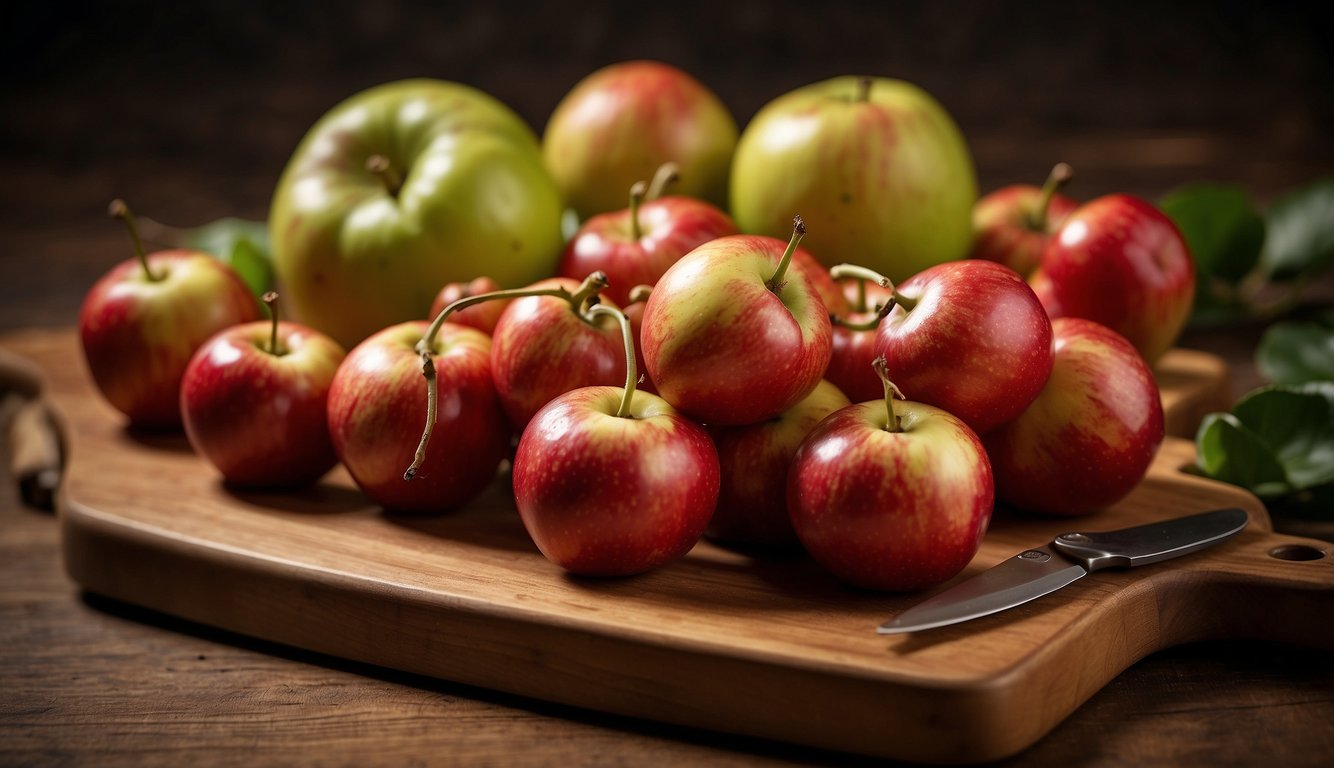
Crab apples are not just edible, they can also be used in various culinary applications. Here are some of the ways you can use crab apples in your kitchen:
Crab Apple Recipes
Crab apples can be used to create a variety of delicious recipes. From jams and jellies to pies and tarts, there are many ways to incorporate crab apples into your cooking.
One recipe that is particularly popular is crab apple cider. To make this, simply simmer crab apples with cinnamon, cloves, and sugar, strain the mixture, and then chill it.
The result is a refreshing and flavorful drink that is perfect for any occasion.
Preserving Crab Apples
If you have an abundance of crab apples, you can preserve them to enjoy throughout the year.
One way to do this is by making crab apple preserves. To make this, simply cook crab apples with sugar and water until they are soft, then pour the mixture into jars and seal them.
The result is a sweet and tangy spread that is perfect for toast, biscuits, and other baked goods.
Cooking with Crab Apples
Crab apples can also be used to add flavor to a variety of dishes. For example, you can add chopped crab apples to apple butter to give it a tangy twist, or you can use crab apple sauce as a topping for pork chops.
You can also use crab apples to add a burst of flavor to baked goods like muffins and cakes.
Edibility and Safety
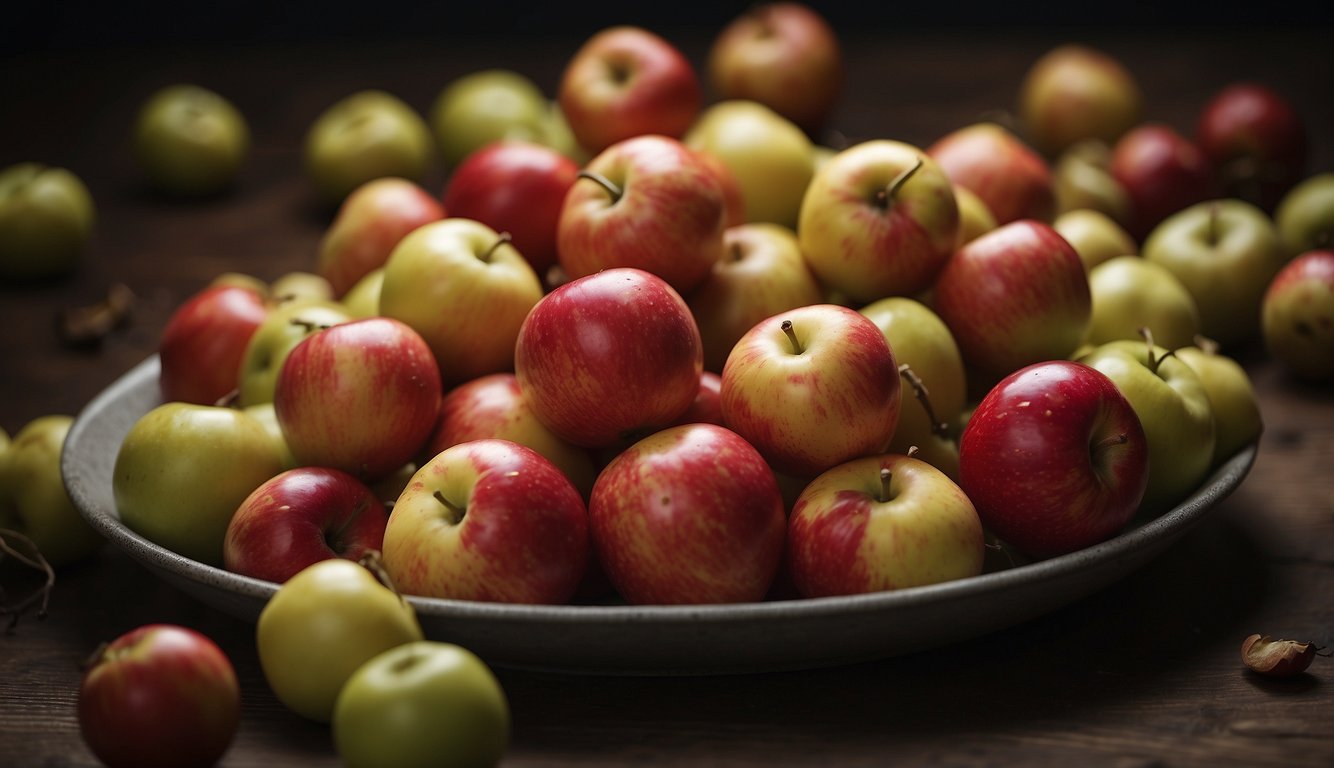
Crab apples are safe to eat and pose no significant health risks, according to Chef’s Resource. They are actually quite similar to regular apples, just smaller and with a more tart flavor.
Toxicity Concerns
Crab apples contain cyanogenic glycosides, which can release cyanide when metabolized. However, the levels of these glycosides are generally low, and it would take a large amount of crab apples to cause cyanide poisoning.
The seeds of crab apples contain higher levels of cyanogenic glycosides than the flesh, but the seeds are usually removed when eating crab apples.
Eating Crab Apples Safely
To safely eat crab apples, it is important to ensure they are ripe and not spoiled.
Ripe crab apples are less tart and have a sweeter flavor. The core of the crab apple should also be removed before eating, as it can be tough and difficult to digest.
Additionally, it is recommended to wash the crab apples thoroughly before eating to remove any dirt or debris.
Comparing Crab Apples and Regular Apples

As the name suggests, crab apples are a type of apple. However, they differ from regular apples in a few ways. In this section, I will compare crab apples to regular apples in terms of taste, texture, and uses in cooking and baking.
Taste and Texture Differences
The most noticeable difference between crab apples and regular apples is their size. Crab apples are generally smaller than regular apples.
When it comes to taste, crab apples are more sour and tart than regular apples. They have a distinct sharpness that can be overwhelming if eaten raw. In contrast, regular apples are sweeter and have a more pleasant taste.
In terms of texture, crab apples have a spongy texture with a grainy flesh, while regular apples have a crisp and juicy texture. The flesh of crab apples is less dense than that of regular apples, which makes them less suitable for eating raw.
Uses in Cooking and Baking
Despite their sour taste and spongy texture, crab apples are edible and can be used in various culinary applications.
They are often used to make jams, jellies, sauces, and even desserts. Crab apples contain a lot of pectin, which is a natural thickening agent, making them perfect for making jams and jellies.
On the other hand, regular apples are more versatile and can be used in a wide variety of dishes. They are often used in pies, cakes, salads, and as a snack.
Regular apples come in a wide range of varieties, each with a unique flavor profile, texture, and sweetness level.
Growing and Harvesting
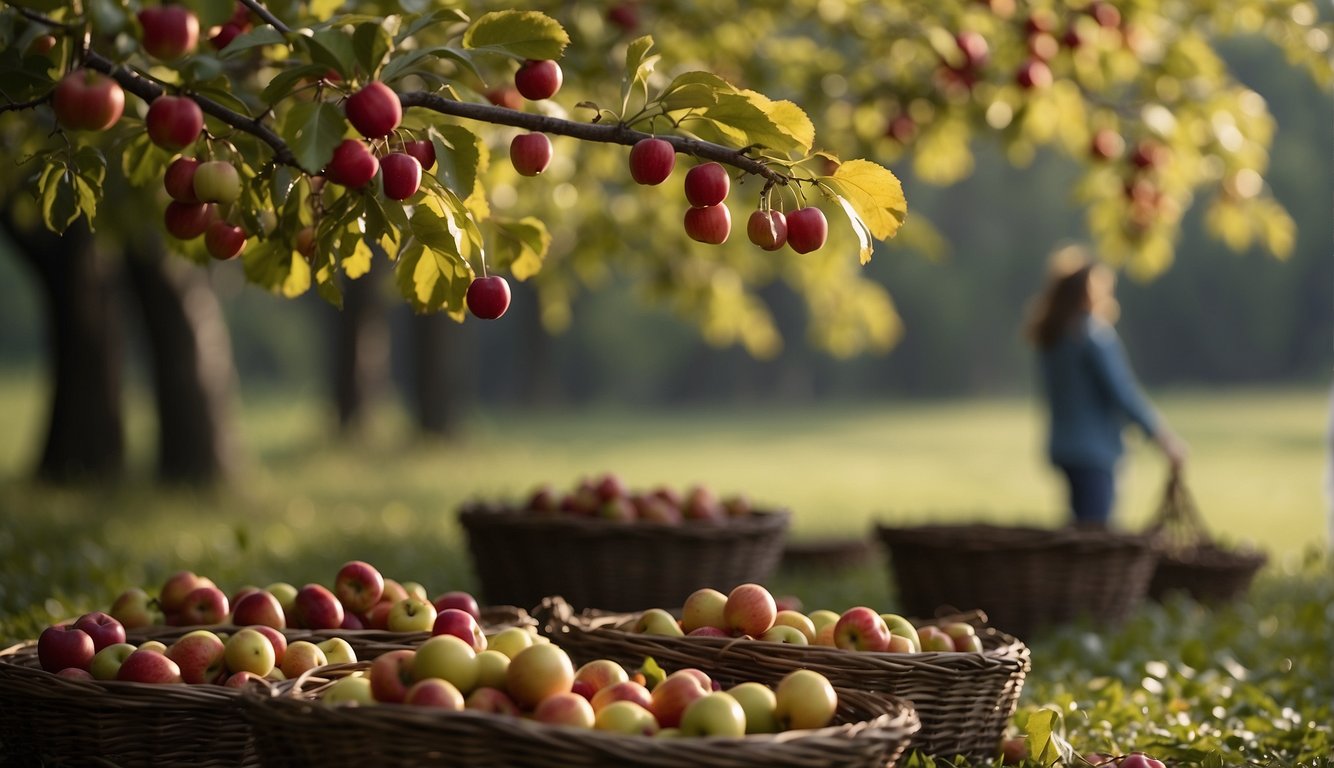
Cultivation
As a gardener, I have grown crabapple trees in my backyard for many years. Crabapple trees are relatively easy to cultivate and can thrive in a variety of soils, although they prefer well-drained soil.
They are also resistant to many common pests and diseases, making them a low-maintenance addition to any garden.
Crabapple trees require full sun exposure to grow properly, and they should be planted in an area that receives at least six hours of sunlight per day.
They can be grown from seed or propagated through grafting, and they typically begin producing fruit within three to four years of planting.
Harvesting Tips
When it comes to harvesting crabapples, timing is key.
Crabapples should be harvested when they are fully ripe and have reached their peak flavor.
The best way to determine if a crabapple is ripe is to look at its color and firmness.
Ripe crabapples will be a deep shade of red or yellow and will be slightly soft to the touch.
To harvest crabapples, simply twist the fruit gently until it comes off the tree.
Be careful not to pull too hard, as this can damage the tree.
Once you have harvested your crabapples, they can be stored in a cool, dry place for several weeks.
They can also be used immediately in a variety of culinary applications, including jams, jellies, and sauces.
For those who enjoy foraging, crabapples can also be found growing in the wild throughout North America and Asia.
When foraging for crabapples, be sure to only harvest fruit from trees that have not been treated with pesticides or other chemicals.
It is also important to be mindful of the environment and to only take what you need, leaving plenty of fruit for wildlife and other foragers.
Crab Apples in the Ecosystem
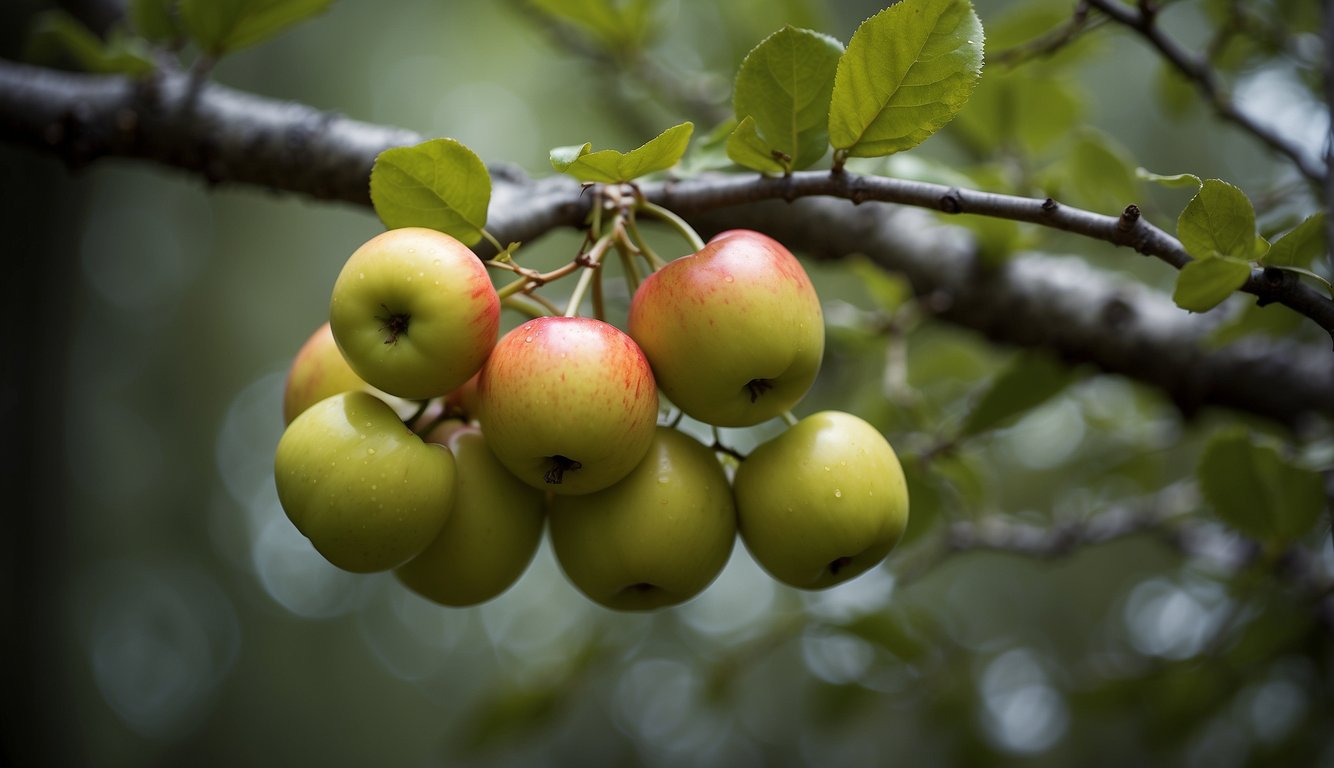
Crab apples are not only edible for humans but also play a vital role in the ecosystem.
They provide a source of food for a variety of wildlife, including birds, squirrels, and deer.
Additionally, the leaves and flowers of the crab apple tree are used by some animals for shelter and nesting.
Benefits for Wildlife
Crab apples are a great food source for many animals.
Birds, such as robins and cedar waxwings, are known to feed on the fruit during the winter months when other food sources are scarce.
Squirrels and deer also enjoy the fruit, as do some smaller mammals like raccoons and opossums.
Furthermore, the leaves and flowers of the crab apple tree provide shelter and nesting material for some animals.
For example, the eastern tent caterpillar uses the leaves of the crab apple tree to build its tent-like nests.
The flowers of the tree attract pollinators, such as bees and butterflies, which are essential for maintaining biodiversity.
Crab Apples and Biodiversity
Crab apples are an important part of the ecosystem and contribute to biodiversity.
They are a native species in many regions and provide a food source for a variety of animals.
By planting crab apple trees, we can help support local wildlife and maintain a healthy ecosystem.
Historical and Cultural Significance
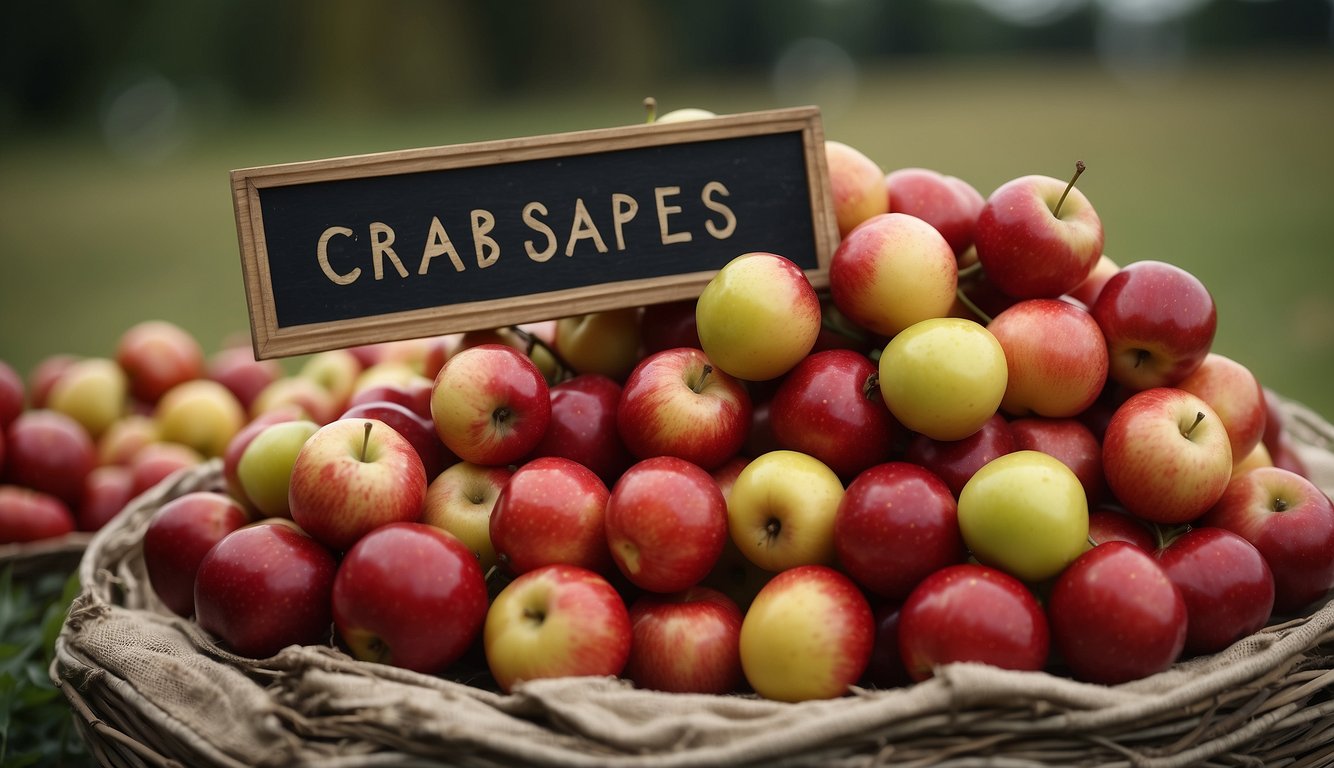
Crab Apples in History
Crab apples have a long and rich history of cultivation and use.
The Malus genus, which includes crab apples, has been cultivated for thousands of years.
In fact, the centennial crab apple tree is believed to be one of the oldest cultivated varieties of apple trees in the world, with some specimens dating back over 100 years.
In my family, crab apples were often used in cooking and baking.
They are particularly good in pies and jams, and their tart flavor adds a nice contrast to sweeter fruits like strawberries and raspberries.
Symbolism and Folklore
Crab apples have also played a significant role in symbolism and folklore throughout history.
In Norse mythology, apples were considered to be magical fruits that represented long life, wisdom, and love.
The goddess Idunna was said to guard the golden apples in the Garden of Asgard, which kept the gods young forever. Apple wands were also used in Norse love rituals.
In Celtic mythology, the apple was a symbol of fertility and immortality.
The goddess Eris is said to have thrown a golden apple inscribed with the words “to the fairest” at the wedding of Thetis and Peleus, which ultimately led to the Trojan War.
Health Implications

Crab Apples and Inflammation
Crab apples are known to contain antioxidants, which can help reduce inflammation in the body.
According to a source, crab apples have a higher polyphenol content than regular apples, which makes them a great food for combating free radicals that cause cell damage and aging.
Polyphenols are plant compounds that have anti-inflammatory properties, which can help reduce the risk of chronic diseases such as heart disease, cancer, and diabetes.
Dietary Considerations
Crab apples are a good source of vitamin C and have small amounts of other nutrients.
One cup of raw crab apples has 83.6 calories and contains low levels of iron.
They are also low in fat and high in fiber, which makes them a great addition to any diet.
However, it is important to note that crab apples are very tart and sour, which may not be suitable for everyone’s taste buds.
If you are planning to eat crab apples, make sure to wash them thoroughly before consuming.
You can also cook them to make them softer and easier to eat.
Some popular ways to cook crab apples include making jams, jellies, sauces, and even pickling them.
It is important to note that consuming too many crab apples can cause digestive issues such as diarrhea, cramps, and bloating. Therefore, it is recommended to consume them in moderation.
Are Crab Apples Edible? A Herbalist’s Take
Today, we’re talking about crab apples. Yes, those tiny, tart apples that you often see in parks and gardens. The big question is, are they edible? The answer is a resounding yes!
Crab apples are not just edible, they’re packed with vitamins and antioxidants. They’re tart, yes, but that makes them perfect for jams, jellies, and ciders. Imagine spreading homemade crab apple jelly on your toast in the morning. Delicious!
But here’s the kicker. Crab apples don’t just benefit us, they benefit our gardens too. They’re excellent pollinators for other apple varieties. So, if you’ve got an apple tree in your garden, planting a crab apple tree can help increase your apple harvest. Now, isn’t that amazing?
Want to know more about edible plants and how to use them? Check out my website, theherbprof.com. It’s your one-stop-shop for all things herbal and edible.
So, next time you see a crab apple tree, don’t just walk by. Pick a few, make some jelly, and enjoy the fruits of nature.
References – Are Crab Apples Edible?
Little Herb Encyclopedia, by Jack Ritchason; N.D., Woodland Publishing Incorporated, 1995
The Ultimate Healing System, Course Manual, Copyright 1985, Don Lepore
Planetary Herbology, Michael Tierra, C.A., N.D., Lotus Press, 1988
Handbook of Medicinal Herbs, by James A. Duke, Pub. CRP Second Edition 2007
The Complete Medicinal Herbal, by Penelope Ody, Published by Dorling Kindersley
Check the Following Articles!
Shredded Cardboard Mulch: The Benefits and How to Use It
DIY Worm Bin: How to Create Your Own Vermicomposting?
Can You Eat a Tomato with Seeds Sprouting Inside?
Adding Bokashi to Compost Bin: A Simple Guide
Frequently Asked Questions – Are Crab Apples Edible?
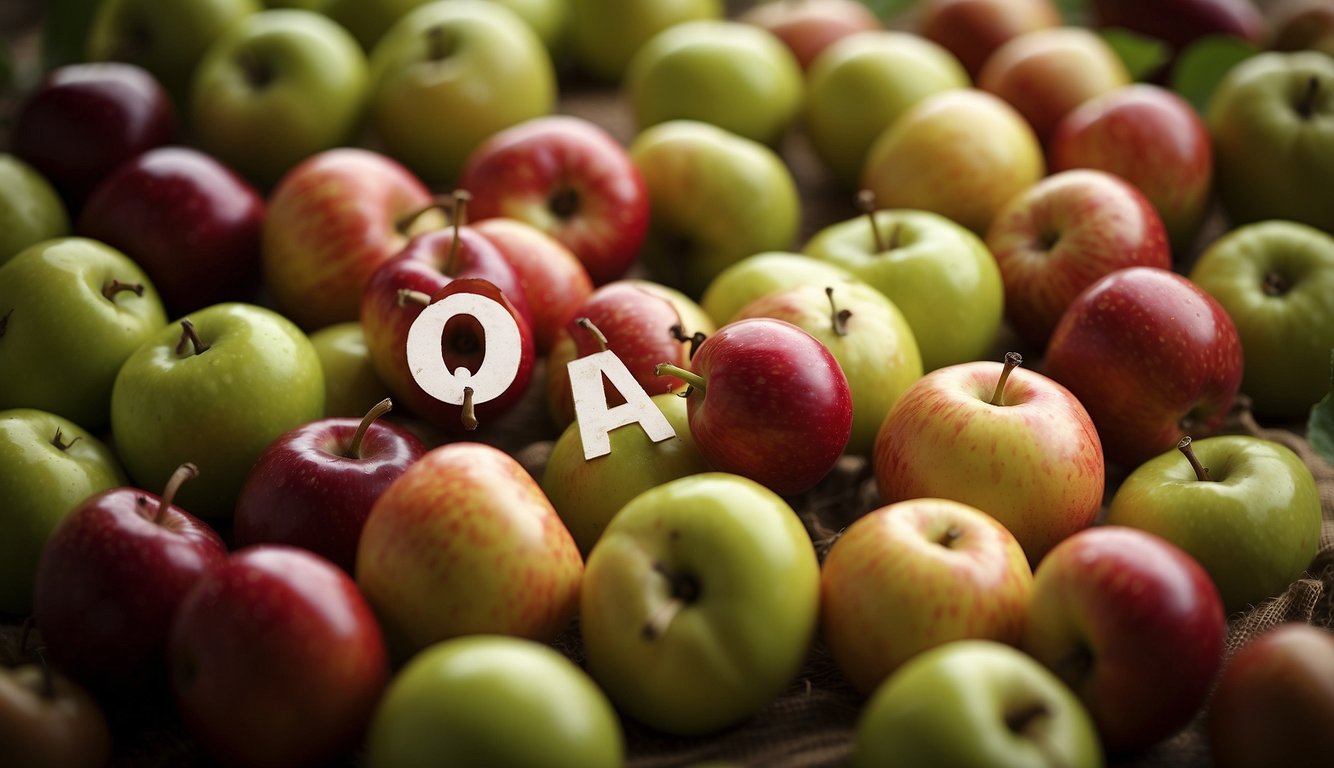
Can humans safely consume crab apples?
Yes, humans can safely consume crab apples.
Crab apples are not poisonous to humans. However, it is important to wash them thoroughly before consumption to remove any dirt or residue that may be present on the skin.
What are the potential side effects of eating crab apples?
Eating crab apples in moderation is generally safe for most people.
However, consuming large amounts of crab apples may cause digestive discomfort such as stomach cramps, diarrhea, and nausea. These symptoms are usually mild and go away on their own.
Are there any crab apple varieties that are not safe to eat?
There are no known crab apple varieties that are not safe to eat.
However, some crab apples may have a more bitter taste than others, which may make them less palatable when consumed raw.
How can crab apples be prepared for consumption?
Crab apples can be prepared for consumption in a variety of ways.
They can be baked into muffins, pies, or crumbles, providing a unique tartness that pairs well with sweet desserts.
They can also be used for making jellies, jams, and preserves due to their high pectin content, which helps these products set.
What is the taste profile of crab apples?
The taste of crab apples can vary depending on the variety.
They tend to be very tart and astringent when raw, especially the smaller varieties. However, larger varieties of crab apples have a milder flavor and can sometimes be eaten raw.
Can dogs have crab apples without health risks?
While crab apples are not toxic to dogs, it is not recommended to give them to your furry friend.
Dogs may have difficulty digesting crab apples, which can lead to digestive upset, including vomiting and diarrhea.
Additionally, the seeds inside the crab apple contain a compound that is toxic to dogs and can cause serious health problems if ingested in large quantities.
